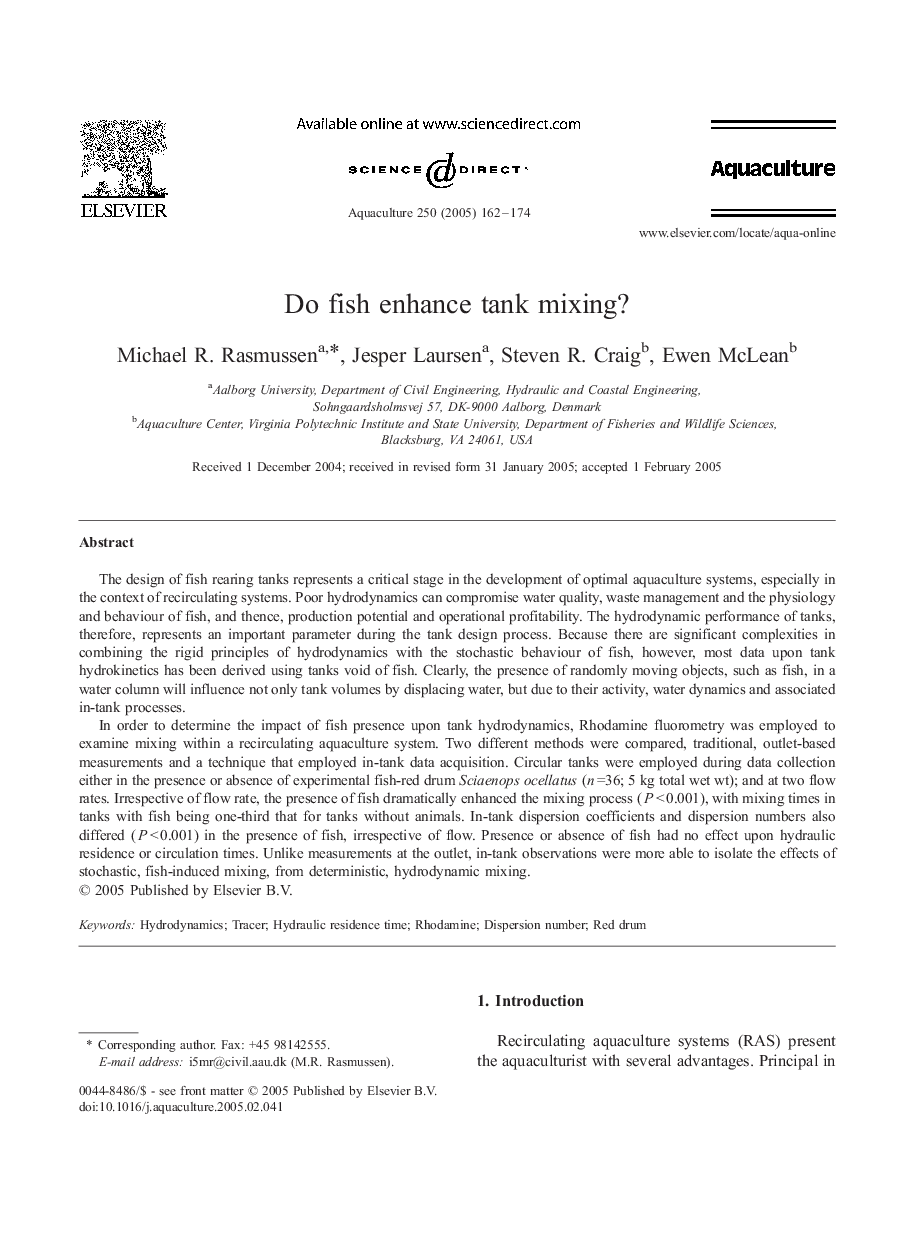| Article ID | Journal | Published Year | Pages | File Type |
|---|---|---|---|---|
| 8974600 | Aquaculture | 2005 | 13 Pages |
Abstract
In order to determine the impact of fish presence upon tank hydrodynamics, Rhodamine fluorometry was employed to examine mixing within a recirculating aquaculture system. Two different methods were compared, traditional, outlet-based measurements and a technique that employed in-tank data acquisition. Circular tanks were employed during data collection either in the presence or absence of experimental fish-red drum Sciaenops ocellatus (n =36; 5 kg total wet wt); and at two flow rates. Irrespective of flow rate, the presence of fish dramatically enhanced the mixing process (P < 0.001), with mixing times in tanks with fish being one-third that for tanks without animals. In-tank dispersion coefficients and dispersion numbers also differed (P < 0.001) in the presence of fish, irrespective of flow. Presence or absence of fish had no effect upon hydraulic residence or circulation times. Unlike measurements at the outlet, in-tank observations were more able to isolate the effects of stochastic, fish-induced mixing, from deterministic, hydrodynamic mixing.
Related Topics
Life Sciences
Agricultural and Biological Sciences
Aquatic Science
Authors
Michael R. Rasmussen, Jesper Laursen, Steven R. Craig, Ewen McLean,
